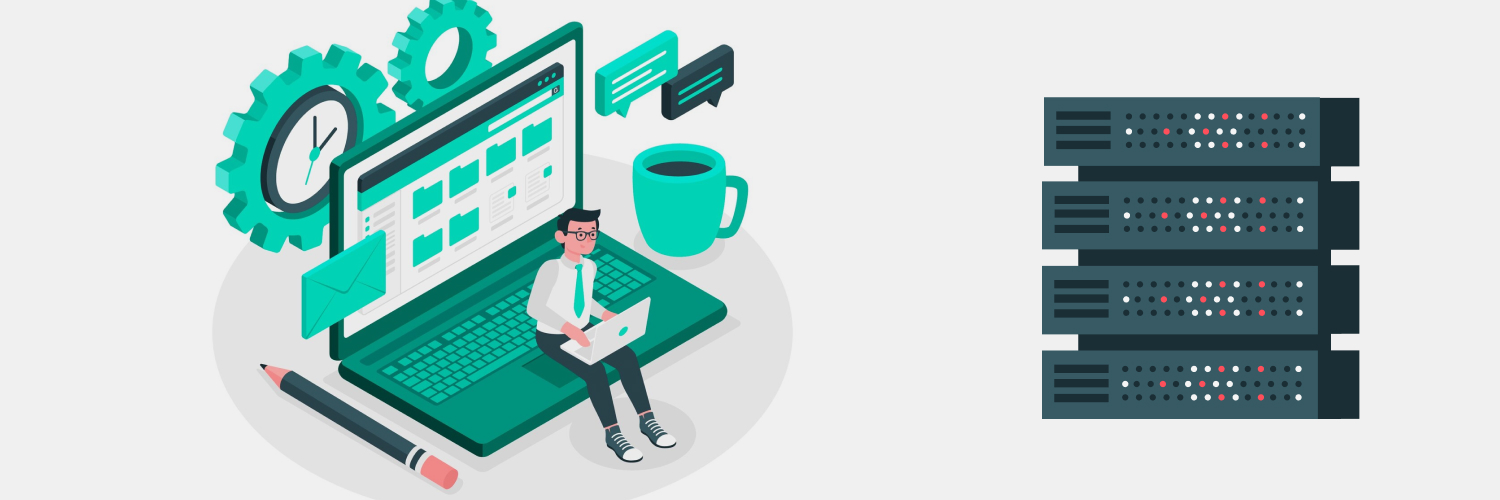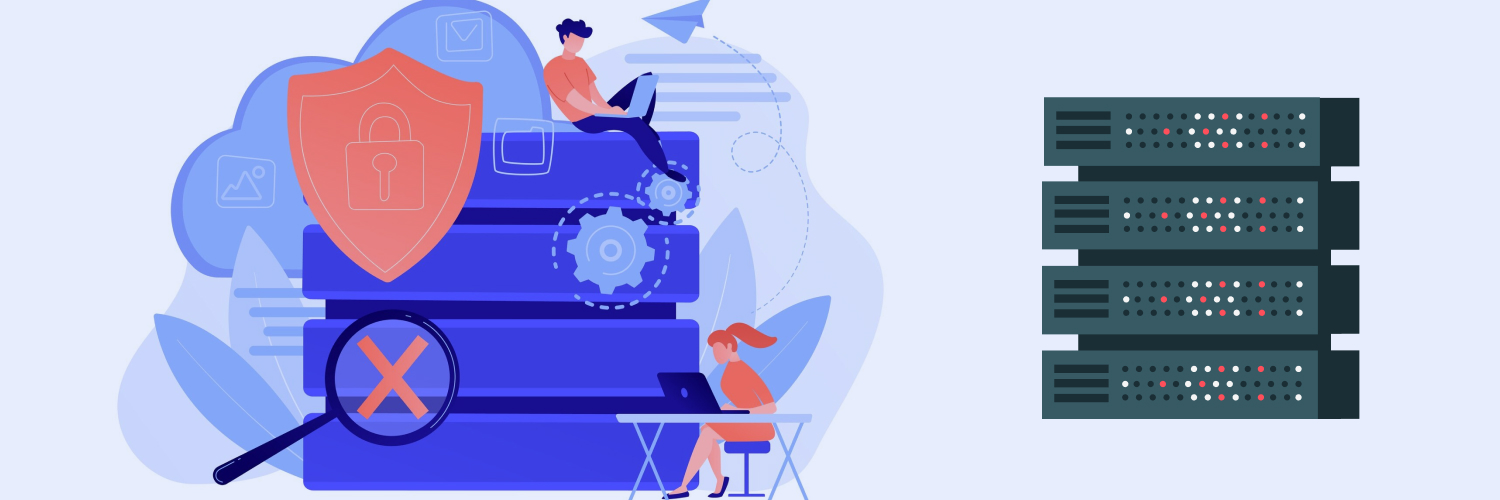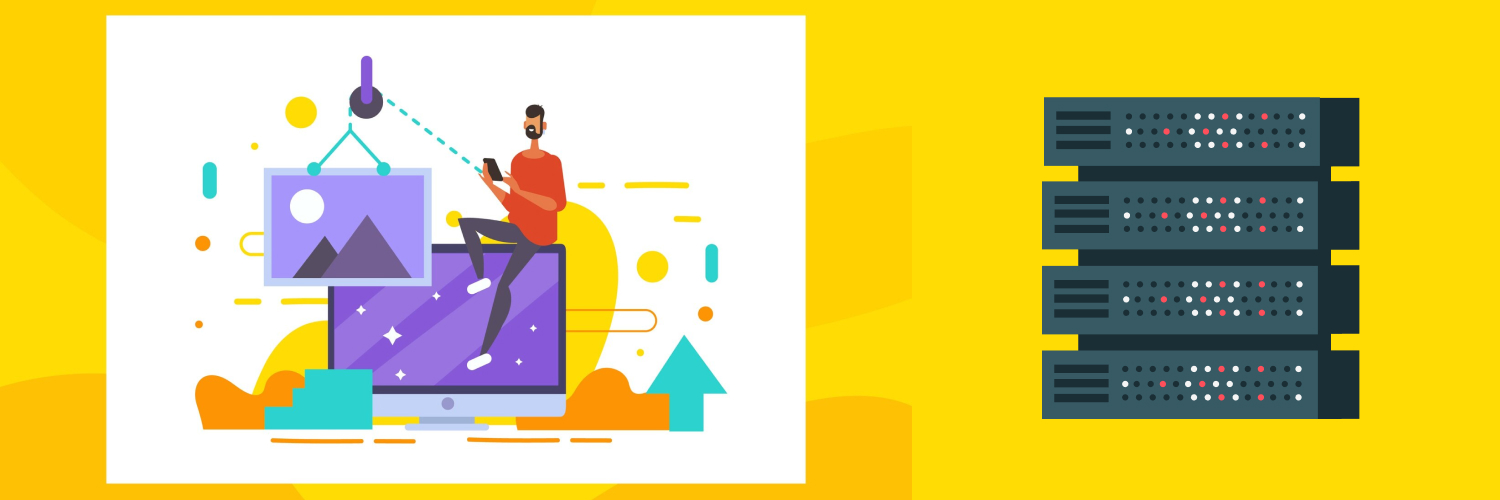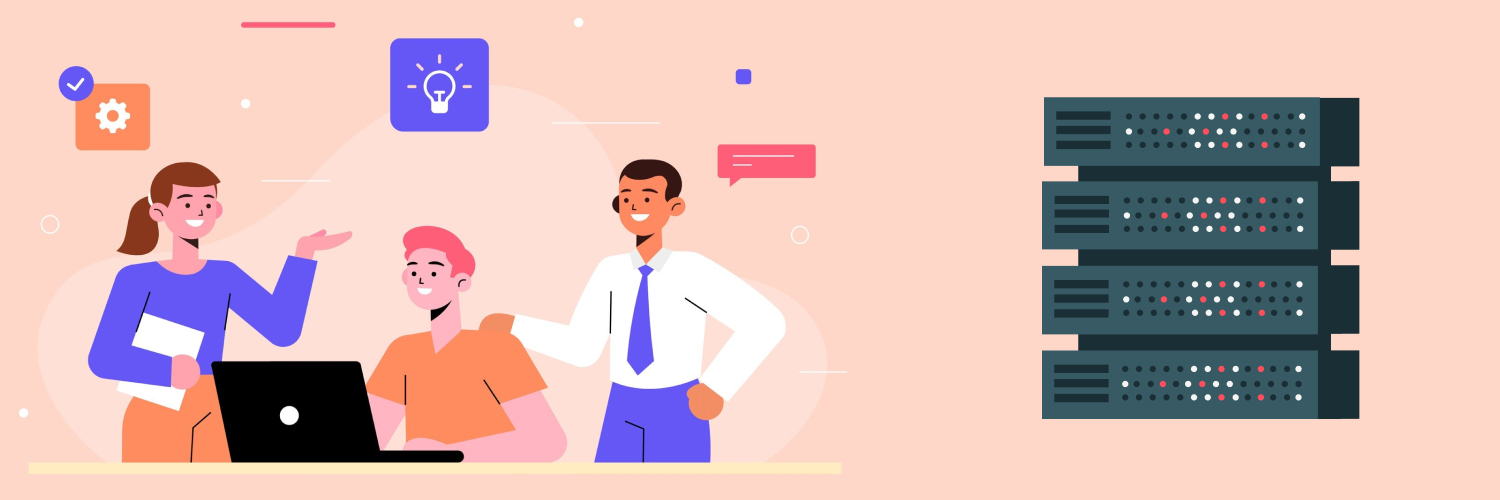IP Bans Explained (15 Tips To Avoid Them While Web Scraping)
If you’ve been web scraping to help research and gather data for your business, you’re likely aware of the valuable information that it provides, allowing you to improve your business operations and strategies. And if you’ve been doing it for a while, chances are you’ve already encountered the dreaded IP bans — or at least heard of them.
Most websites — if not all — hate it when people try to retrieve large amounts of data using automated means like spiders and web crawlers, and with good reason. When enterprise users resort to web scraping tools without taking the appropriate steps, they might be doing more harm than good without even realizing it (or wanting it).
Web scraping can sometimes saturate web servers and cause the sites to malfunction. Owners lose money and conversion opportunities with each second their website is down. That’s why they’re not particularly thrilled by researchers that use web scraping, regardless of their intentions.
Sites that handle data worth scraping are also sometimes targeted by cybercriminals looking to wreak havoc. They don’t stop and ask if you’re a good guy or a bad guy before they block your access to their valuable information. Admins need to act fast if they want to stop malicious actors on their tracks, which is why they implement anti-scraping measures like IP bans to protect themselves from potential attacks.
Even when these severe security-related actions are somewhat reasonable if you walk a mile in the web owner’s shoes, they can be a huge nuisance for those who depend on web scraping to advance their business. Luckily, there are numerous ways to avoid getting your IP address banned.
What Is an IP Ban?

An IP ban is a block that a server sets up to reject any requests from a specific IP address (or a range of them). If you stumble upon one, chances are you probably violated the site’s terms of use. This action is often triggered automatically by abuse patterns, but the admin can also manually place it when they detect something’s not right. The goal of an IP ban is to prevent attacks and information theft. It can be implemented in:
- Forums
- Game servers
- Email servers
- Websites
- Streaming services
- Social media
- eCommerce sites
- Search engines
Websites have numerous ways to detect web crawlers and other web scraping tools. They closely monitor users’ IP addresses, browser parameters, user agents, and other factors that can give away if they’re engaging in normal user behavior or if they’re a bot. If a site finds any kind of suspicious behavior, you might receive CAPTCHAs. If you don’t take the hint, you could eventually get blocked by the site.
IP bans are the primary inhibitor of web scraping simply because users don’t want to get blacklisted and deal with the aftermath of the whole ordeal. Regaining access to the site quickly often requires getting a new IP address. In any case, it’s much easier to take preventative steps to bypass an IP ban while scraping rather than trying to fix the problem once you’re already blocked and learn how to access blocked websites. Here’s a list of suggestions on how to minimize the risks of getting caught when scraping and crawling websites.
How to Crawl a Website Without Getting Blocked

Web scraping doesn’t have to give you major issues. While it’s true most popular sites are constantly trying to prevent data extraction, it’s not an impossible task. If you follow this guide, you’ll become less likely to get blocked. Here are some tips on how to get around an IP ban successfully.
1. Use the right proxy
A site will block an IP address without hesitation if it detects numerous requests coming from it. But how can you avoid sending all of your requests through the same IP address? That’s where proxies come in. They act as intermediaries between you (the client) and the site you’re trying to scrape (the server) and allow you to mask your actual IP address as you send your requests and avoid submitting them through the same one.
In short, using a reliable proxy will help you:
- Decrease IP blocks.
- Ensure anonymity.
- Bypass geo-targeted blocks.
- Have an additional security layer.
You can pick between residential and datacenter IP proxies, depending on your intentions. Keep in mind, however, that using a single IP set up in your proxy is still likely to get you blocked. That’s why you must route your requests through a series of random IP addresses that come from a pool.
Your best bet is to purchase Rayobyte rotating residential IPs. Since residential IPs are IP addresses designated by an Internet Service Provider to a physical location, they look more natural to the sites you’re trying to scrape. What’s more, rotating means they frequently change, so you don’t have to worry about your requests being traced to the same IP.
2. Rotate IP addresses
Getting a proxy pool is not enough to prevent you from getting blocked. You need to rotate your IP addresses regularly to lessen the probabilities even more. As previously stated, if you send too many requests from a single IP address, it won’t be long until the site you’re scraping figures you out and identify you as a threat. This might cause them to block your IP address.
Most websites operate on the understanding that each internet user gets only one IP address assigned to them. That’s why when a bunch of requests come from the same IP number, it seems a tad suspicious. Yet thousands of requests coming from thousands of users suddenly doesn’t sound as crazy, so it’s less likely to raise red flags.
Having 100 IP addresses will let you submit as many inquiries as 100 real internauts would. IP rotation, on the other hand, makes it look like your requests come from numerous users and makes them less predictable. That’s why using rotating residential IPs or mobile proxies is so important to keep your scraping activity running smoothly and trick sites using advanced proxy blacklists. If you choose to purchase datacenter proxies instead, make sure you use a proxy rotator service with them to keep switching things up.
3. Get familiar with the site’s robots exclusion protocol
As mentioned before, most popular sites have stringent anti-scraping rules in place. Before attempting to extract data from any website, ensure they allow data gathering to a certain extent. To do so, inspect their robot exclusion protocol or robots.txt file.
Respecting the rules of the website is the easiest way to avoid getting in trouble. Even when the site you’re interested in allows crawling and scraping, make sure to respect their terms. Some of the most common rules in most site’s robot exclusion protocol are:
- Crawl only during off-peak hours.
- Limit requests coming from the same IP address.
- Set a delay between requests.
Following these rules will not guarantee you won’t get your IP blocked by the site, however, it will minimize the risk — especially if you combine this measure with others in this list.
4. Use an organic-looking user agent
Every request made by a browser has a user agent, which is a special type of HTTP string in the header of the request. It identifies the operating system and the browser to the webserver. Much like with an IP address, if you use the same user agent for an abnormally large number of requests, you’re likely to get blocked.
To avoid any annoying surprises while web scraping, switch your user agent regularly rather than sticking to the same one. Developers often add a fake user agent in the header to avoid blocks. You can either automate this in your web scraping tool or manually make a user agent list.
Advanced users can even set their user agent to the Googlebot user agent. Almost every website under the sun wants to rank on Google, so they’ll let the Googlebot through without thinking twice. Keep in mind that each browser has a different user agent, and they get updated now and then. You’ll benefit from keeping yours current to appear less suspicious.
5. Avoid honeypot traps
Honeypot traps are links in a site’s HTML code that are often invisible to organic users but still detectible to crawlers and web scraping tools. Because only bots would follow these links, when a website visitor falls into a honeypot trap, the security team can be relatively certain that it’s a crawler and not an ordinary human user that’s extracting data. This allows them to protect their information by fingerprinting the properties of the client’s requests and blocking them.
When building a scraper to target a particular site, you need to program it to look for links with a “display:none” or “visibility:hidden” CSS properties set to avoid being caught by surprise. This will prevent your crawler from accidentally clicking on a fake link that’ll get your IP blocked. Advanced admins can even change the links’ colors to match the site’s background in some cases, so make sure to check for “color:#ffff” settings as well.
6. Space your requests using random intervals
Scrapers that send requests at oddly regular and perfectly timed patterns are easier to detect by anti-bot mechanisms. That’s because no real person would ever be that predictable. In other words, when a human user is submitting inquiries, their intervals wouldn’t be as obvious as sending a request each second for 24 hours straight.
Using randomized delays can help you avoid being blocked when using a web scraping tool to extract your data. This measure will also let you comply with the site’s rules by spacing out your requests as not to overwhelm their server. Using a framework like Scrapy or Octoparse can help you slow down the pace. However, you can also program your own web crawler with this function.
A good rule of thumb is waiting between two and 10 seconds in between requests. A site’s robots.txt is a good indicator of the correct delay time you should be using, as it’ll often have a crawl-delay like that states exactly how many seconds you should wait so that you won’t cause traffic-related issues.
7. Set a Referrer
Referrers are HTTP request headers that allow websites to know what sites you’re coming from. You might want to make it look like you’re coming from Google or a social media site as it will make your browsing path look more authentic and humanlike. After all, webmasters expect to receive heavy traffic from said platforms.
You can adapt your referer by using this header:
“Referer”: “https://www.google.com/”
You can adjust your referrer to the country of the site you’re trying to scrape. For example, you’re crawling a website in India, you can use:
“Referer”: “https://www.google.co.in/”
8. Use a headless browser
Headless browsers are essentially web browsers without a user interface. This means they’re the same browsers you know and love, except that they’re stripped away from elements like:
- Tab bars
- URL bars
- Bookmarks
These types of browsers expect you to interact with them on a programmatic level, meaning they require you to write scripts with specific instructions on how they should act.
Despite their lack of visual interaction features, headless browsers still allow you to emulate clicking, downloading, and scrolling as you normally would. These tools are ideal for performing repetitive tasks you’d like to automate, such as web crawling and scraping.
Not having to load all your regular browser’s visual features helps save resources and speed up tasks. However, remember these programmatically controllable browsers are extremely CPU and memory-intensive, which might lead them to crash.
Scraping the web with regular HTML extraction tools may allow sites to easily fingerprint your browser and detect subtle tells like extensions, cookies, and JavaScript execution. If they determine you’re not a real user, they will block you for suspicious behavior in a heartbeat.
A headless browser, on the other hand, emulates interactions with a particular website, platform, or app through the eyes of a user relying on JavaScript elements. This ultimately allows you to extract data from even the most challenging targets.
However, keep in mind that if the site you’re trying to scrape doesn’t rely on JavaScript or does not use JavaScript tracking methods to block crawling attempts, a headless browser will probably be unnecessary. In these cases, you’re better off using a regular scraping app or library and performing simple GET requests.
Dynamic AJAX pages and data nested in Java Script elements, on the contrary, need you to render the full page like a real user. Since HTML scrapers won’t let you do that, you can benefit from a headless browser. These tools will also let you emulate the fingerprint parameters of a real device, including:
- IP address
- Screen resolution
- JavaScript configuration
9. Resort to CAPTCHA solving services
While surfing the web, you’ve probably come across a set of puzzles most websites use to confirm that you are, in fact, human and not a robot trying to steal their precious information. CAPTCHAs typically include images that are pretty much impossible to read by computers. These anti-scraping tools can be a bit of an annoyance to regular users, but they’re a real headache for high-volume web scrapers.
Following some of the other suggestions in this guide might help you avoid CAPTCHAS to some extent by making you look more human. Yet, if the issue persists, a dedicated CAPTCHA solving service or a ready-to-use crawling tool will let you work around these restrictions.
10. Keep an eye out for website changes
Some websites may change layouts out of the blue or implement different layouts in unexpected places. These inconsistencies could cause your scraper to break. To avoid being caught off guard, you need to detect and closely monitor these changes when building your web scraping tool. To ensure your crawler is still up and running, you can count the number of successful requests per crawl.
Alternatively, you could write a unit test for a set of page-specific URLs on the site of your interest. For instance, if you’re scraping an eCommerce site, you need to perform a unit test for the search results page, another one for the product page, another one for the reviews page, and so on. This will allow you to look for breaking site changes and errors within a few programmed requests rather than through a full crawl.
11. Change your web crawling pattern
The way you configure your web scraping tool to navigate a site is called a pattern. If you consistently use the same one, you’ll end up raising red flags that will invariably get you blocked. To avoid this, you could add random scrolls, clicks, mouse movements, and other actions that will make your pattern look less predictable and more humanlike.
Your behavior should not be entirely randomized, though. You don’t want it to look chaotic and erratic. Think how you would normally behave when browsing the web and apply those same principles to your crawler for better results. The point is to get your web scraper’s behavior to make sense to the webmaster and avoid IP bans.
Keep in mind that while bots tend to be more monotonous and precise in their browsing patterns, humans would use random clicks and irregular view times. That’s how anti-scraping mechanisms can easily detect the difference between the two. Changing your crawler’s scraping pattern from time to time will help you stay out of trouble.
12. Slow down your scraping speed
Having your crawler sending requests left and right at an extremely fast pace is a no-go if you want to avoid getting your IP address banned. If you add random breaks and initiate wait commands in between actions, you’ll make your requests look more natural. After all, an average user wouldn’t be able to submit hundreds of inquiries within seconds.
While you might want to gather data as quickly as possible, in this case, patience is key. You don’t want your scraping speed to give you away and get you caught by anti-bot mechanisms. If an admin finds you’re going through the site’s pages way too fast, they will be quick to block you to stop you from overwhelming the site.
To avoid speed-related IP bans, be a polite scraper and reduce your page access to one to two pages at a time. This will also be helpful if your target has set up an IP address rate limitation that regulates the number of actions you can perform on their site at a certain time.
13. Crawl during off-peak hours
Since most crawlers move through sites and pages much faster than an average user, crawling a site at peak times may affect the server load. This will negatively impact the user experience by causing slow load times, ultimately bringing trouble to the site.
Part of being undetectable to anti-scraping tools is causing no harm to a site. Try finding an appropriate time to crawl to minimize the adverse effects your activities might have on the server. This will vary on a case-by-case basis, so monitor peak and off-peak hours closely before you start extracting data.
14. Avoid scraping images
One of the main rules of ethical web scraping is leaving copyrighted content alone. Images are often copyright protected, so scraping them for further reproduction is a clear no-no. Additionally, this type of content is data-heavy and will invariably take huge amounts of bandwidth and storage space, leading to site overloads.
Images tend to be hidden in JavaScript elements, which will slow down your web scraping tool or require more complex steps to obtain. This means you’ll need to write a more sophisticated program to obtain them — and in turn, risk getting detected by the site’s admins. The moral of the story is: don’t scrape images unless it is strictly necessary.
15. Scrape out of the Google cache
If you’re dealing with extremely hard to scrape sites, you can always try crawling the Google cached copy. This can be a tad more reliable and will provide you with non-time-sensitive data without dealing with sites that are likely to block your scraping attempts.
Use this measure as your last resort, though. Some sites actively tell Google not to cache their information, and others might be rather outdated. This might lead you to end up with useless information depending on your purpose.
Using Different Types of Proxies to Avoid Proxy Bans

One of the key elements on how to prevent getting blacklisted while scraping is using a proxy to mask your identity and add an extra security layer. However, not all proxies are built the same way, and some might be more useful than others depending on your scraping goals. Here are the most common proxy types so that you can compare and contrast them to make an educated decision.
Public proxies
Public proxies are free and available for anyone to use. While this may seem great, there are some major drawbacks.
For one, because public proxies are available to pretty much anyone, that means when you use them, you’re at risk of being hacked, having your data compromised, and more. It also means that if someone using the same proxy doesn’t enable best practices on a site gets blocked, you won’t be able to access that site using that proxy, either.
While public proxies may seem like a good choice for their low (no) cost and accessibility, for any business or person looking to gather a significant amount of data and stay protected, there are much better options available.
Mobile proxies
These proxies are intermediary IP addresses that use a cellular connection to send traffic via mobile devices in the most popular carriers’ networks. They help you change your IP address and seamlessly change your perceived location. Please note that a smartphone connected to a WiFi network is not considered a mobile proxy but rather a residential one.
There are two main methods to make mobile proxies:
- Borrowing IPs from other users: This technique lets proxy providers insert an SDK code into popular apps for people to download and become proxy nodes. While this allows for building large networks, it’s pretty unpredictable since the source can go offline at any given time.
- SIM card farms: This method uses special software and USB dongles to generate mobile proxy networks. It’s more suitable for limited-scale use, as it gives access to one IP at a time rather than the whole IP pool. SIM card farms are often small and localized. They have rotation intervals that provide more predictable performance.
Unlike residential and datacenter proxies, mobile proxies run on mobile data, meaning they utilize the bandwidth and IP address of a mobile telecom provider plan. Due to an IPv4 shortage, mobile companies use Carrier-Grade NAT technology, which is a type of IPv4 network address translation that allows several clients to use a single output IP. This is where it gets interesting.
Typically when a website sees many requests coming from the same IP address, they will ban it. However, dealing with a mobile IP is trickier, since they would be blocking hundreds of cellphone users. That’s why website owners are more reluctant to take action against these types of IPs and bans are less frequent.
However — and this is a big however — even when mobile IPs let you obtain all the data you need efficiently, they tend to be more costly. After all, getting IPs on cellular connections is more challenging, and their bandwidth is not cheap and expires regularly (meaning you’ll have to keep on repurchasing each cycle).
Also, most phones operate on a maximum of 50 Mbps download speed and roughly 10 Mbps upload speed. So if lower speeds are a dealbreaker for you, these types of proxies are probably not suitable for you.
While more costly, the benefits of mobile IPs far outweigh the cons — they provide seamless rotation that helps you scrape the web to ultimately avoid bans.
If maintaining your anonymity while effectively avoiding IP bans as you scrape the internet for data is your main priority, purchase Rayobyte mobile IPs.
Residential proxies
These types of proxies are tied to a physical address and assigned by an internet service provider to your devices. They are versatile, reliable, and allow you to efficiently gather the data you need with little complications.
The greatest benefit of using residential proxies is that they’re not as likely to get blocked as their datacenter counterparts. Most websites cannot actually tell the difference between a normal IP address and a residential proxy. Yet, you still have to abide by web scraping best practices if you want to avoid IP bans.
Websites are quick to detect and act against suspicious behavior even when using IP addresses that look legitimate. Rotating your residential proxies is an excellent measure to keep IP bans at bay. This technique automatically changes your IP address. On the downside, rotating residential proxies can be a little on the pricier side. Yet, you’re paying for the added security and quality they bring.
Residential proxies are typically sourced from real users who agree to let others use their IP addresses. Keep in mind, however, that not all companies are ethical about sourcing their residential IPs, which can put your security and reputation at risk. If you want optimized proxies from a reputable source that prioritizes ethical sourcing, purchase Rayobyte’s rotating residential proxies.
Internet service provider proxies
These proxies are intermediary IP addresses associated with an Internet Service Provider (ISP) but with no end users. They’re hosted on a server as opposed to a residential device. They emerged as an ingenious solution to the challenges datacenter and residential proxies present.
ISP proxies are essentially datacenter IP addresses registered under an internet service provider. They don’t rely on node users staying online as residential proxies do, and they can stay online for longer than datacenter proxies.
Formerly known as static residential proxies, ISP proxies can send your requests through different IP addresses. They’re able to hide your actual IP and location and provide you with the anonymity you need for web scraping.
These types of proxies offer fast speed and low response times. They have higher uptimes and in some cases, unlimited bandwidth. This makes them a reliable option that’s also much cheaper than others on this list. Yet, ISP proxies have limited locations and fewer subnets.
Although its popularity is increasing by the day, ISP proxies are still pretty rare. If you’re looking to test out this option from a trustworthy provider, check out Rayobyte datacenter and ISP proxies.
Dedicated datacenter proxies
Also known as private proxies, these are intermediary IP addresses that can only be used by one client at a time, meaning you won’t have to worry about others accessing it without your knowledge. Dedicated proxies can come both from ISPs and datacenters. However, dedicated datacenter proxies are still much more common.
Dedicated datacenter proxies allow you to conceal your identity and modify perceived location while scraping the web. They will allow you to submit multiple requests while minimizing the risk for IP bans.
Since you’re not sharing them with anyone, these proxies offer the fastest servers available and reduce the unexpected blocks you’d encounter while using shared proxies. Additionally, using a private proxy significantly narrows down the chances of others doing something illegal with the same IP you’re using.
The only notable downside of dedicated datacenter proxies is that they come with a hefty price tag. Since you’ll be the only one using it, you’re ultimately responsible for absorbing all the costs. Yet again, while it’s more costly, you get what you pay for. You’ll be investing in the peace of mind and the added security, privacy, and quality this type of proxies provides.
Rotating datacenter proxies
These IP addresses come from all across the globe and are based in datacenters. They rotate frequently, which means they’re more reliable and a bit faster. However, since these IPs have more of a botlike behavior than residential and ISP IP addresses due to their nature, they tend to be more easily picked up by some websites.
Rotating datacenter proxies are often cheaper than other alternatives. They also operate on higher speed performance and because they don’t route your requests through other devices. When you send a request via datacenter proxy, it goes straight through the datacenter proxy server and is replaced with a different IP address before it reaches the site.
Semi-dedicated datacenter proxies
This lesser-known type of proxies works as a middle ground between shared and private proxies. They are used by various people at a time, yet the group of users that have access to them is relatively small when compared with fully shared proxies. Although they do not offer IP exclusivity, semi-dedicated datacenter proxies are still a pretty reliable option. They do, however, have speed limitations that can cause some browsing issues.
Semi-dedicated proxies are a cheaper alternative to dedicated, mobile, and residential proxies, and offer better performance than shared datacenter proxies. They’re suitable for small to medium-scale projects, but might not be the best solution for you if you are trying to do heavy-duty data extraction. Much as it happens with other types of shared proxies, you won’t be able to guarantee other users aren’t performing unethical or malicious actions using the same IP as you.
Proxy Management Applications: How Can They Help You Avoid Proxy Bans?

Having an efficient proxy management tool has become a vital step on how to bypass IP bans effectively in recent years. This software is designed to manage a network’s proxy servers, filter requests, implement certain policies, and more. Proxies are ultimately a gateway between your businesses’ computer terminals and the world wide web. Using a proxy management tool can help you implement measures to limit access to certain websites while efficiently handling network traffic.
You can also benefit from having a proxy management tool when web scraping. It will let you handle complex retry and rotation logic to deal with common bans and restrictions your proxies may encounter. This software will also allow you to avoid spamming the sites you’re extracting data from, thus reducing your probability of being blocked.
Rayobyte’s Proxy Pilot is a great alternative if you want a one-stop-shop solution for your proxy management needs. It comes included in all our residential proxies, but you can also use it on your own. It takes only a few minutes to set up as opposed to the hours of coding and monitoring you’d need to perform the same tasks as a developer. Moreover, you can easily build it into any Phyton scraping program you create. Try it out and forget about the most common proxy-related concerns.
Working Around IP Bans With Rayobyte

Scraping public data is challenging enough as it is. You don’t want to make any missteps that will only bring you headaches as you face unnecessary IP bans you could’ve easily prevented. It’s highly unlikely for websites to forget their dislike for web scraping activity, bots, and high-volume data gathering any time soon. Luckily, this guide has all the most common ways to avoid IP bans like a ninja. All you need to do is follow our suggestions and you’re well on the way to scraping all the data you need — sans-bans.
Setting your browser parameters right, rotating your proxies, and pacing your scraping speed are only a few actions to avoid getting caught in the act by the sites you need data from. The most important measure you can take to steer clear from IP bans is using reliable proxies and a powerful proxy management tool. This will let you perform all your web scraping endeavors with minimal setbacks and a lot more ease. Keep in mind you’ll also have to be respectful of the site’s rules to keep your and the other users’ experience running as smoothly as possible.
The information contained within this article, including information posted by official staff, guest-submitted material, message board postings, or other third-party material is presented solely for the purposes of education and furtherance of the knowledge of the reader. All trademarks used in this publication are hereby acknowledged as the property of their respective owners.



